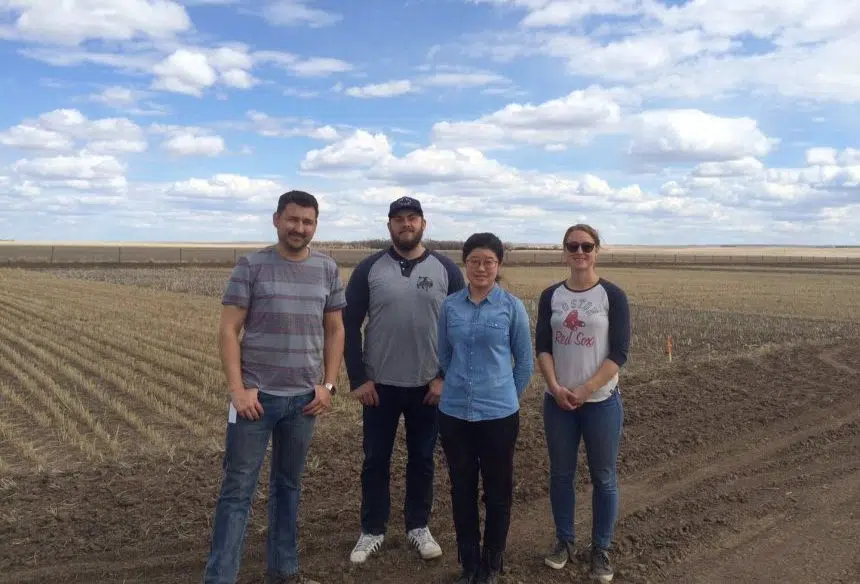The addition of phosphorus fertilizer can be a delicate task, but researchers at the University of Saskatchewan have come closer to finding the balance for farmers.
Phosphorus is one of three main fertilizer nutrients, and how it is used in conjunction with other key nutrients — like nitrogen — can change the chemistry of the soil and and its impact. How much is used can have drastic outcomes on crops — too little can make for lower yields while too much can be lost to runoff and lead to algae blooms in nearby lakes and ponds with the potential to be toxic.
Phosphate rock itself, which is used in fertilizer, is a limited resource.
USask researchers have recently come a little closer to determining a quantity of phosphorus for effective and safe fertilizer use. Using the Canadian Light Source at the university, the team used light millions of times brighter than the sun to gather detailed information on the nature of fertilizing with nitrogen and phosphorus. The information shed light on changes in soil chemistry and availability of phosphorus for crops
Findings of the study showed that long-term fertilization practices, in particular, the use of nitrogen fertilizer, changed the soil chemistry of the plots. This led to a change in the chemical forms of phosphorus and the ways the nutrient cycled within the soil.
Adding nitrogen fertilizer reduced the pH of the soil, making it more acidic and binding the added phosphorus fertilizer more, making it less available to crops.
“Soil pH and organic matter — which contribute to good soil health in general — had the largest influence on the forms of phosphorus in soil and the processes these phosphorus forms undergo within soil,” said Agriculture and Agri-Food Canada researcher Dr. Barbara Cade-Menun in a news release.
Cade-Menun, who collaborated on the study, said “the key to optimal cycling of phosphorus (for producers) is ensuring their soils have sufficient organic matter and a neutral pH.”
The team examined soil from long-term plots, established in 1967, at Agriculture and Agri-Food Canada’s Swift Current Research and Development Centre. The plots had a fallow-wheat-wheat rotation and had received a fixed amount of phosphorus since they were first planted, with or without nitrogen fertilizer.
Sub-plots that had ceased phosphorus fertilization in 1995 were also examined with no change in nitrogen fertilization.
The researchers were able to employ high-tech equipment at the Saskatchewan Structural Sciences Centre (SSSC) and the SXRMB beamline at the Canadian Light Source to identify the chemical forms of phosphorus present in soil molecules.
Cade-Menun said this allowed the team to look at phosphorus that is bound to carbon and “the inorganic side.” This allowed the team to ask and answer the question: “How are forms (of phosphorus bound to calcium, iron or aluminum) shifting with different fertilizers?”
“These advanced tools allow us to know precisely what is going on in the soil,” Cade-Menun said.
The results point to more digging needed to better understand the specific roles of pH and organic matter in phosphorus soil cycles.
“I don’t think anybody would argue with wanting to grow crops that are healthy and to optimize our production because the consumer benefits. But we want to do that in the most cost-efficient and environmentally sustainable way,” Cade-Menun said.
“That means balancing what the crop needs with making sure it has just enough, but not too much, fertilizer.”
The study was part of a Ph.D. thesis project by Shuo Chen, a researcher from China Agricultural University in Beijing, and has been published in Geoderma.










